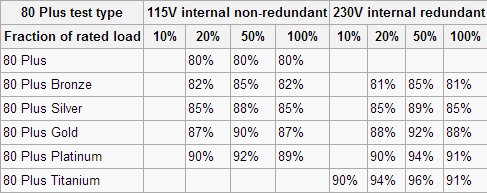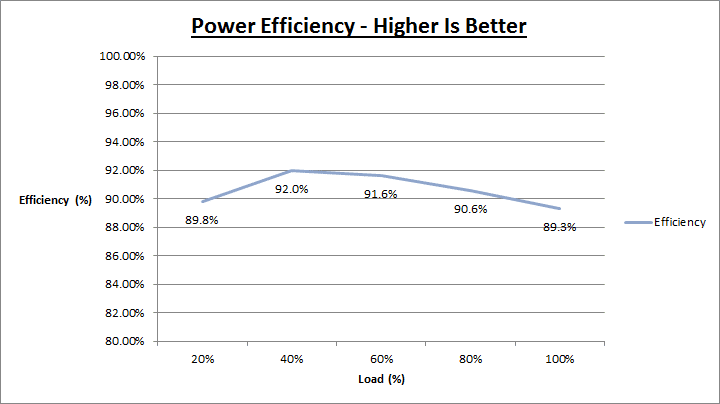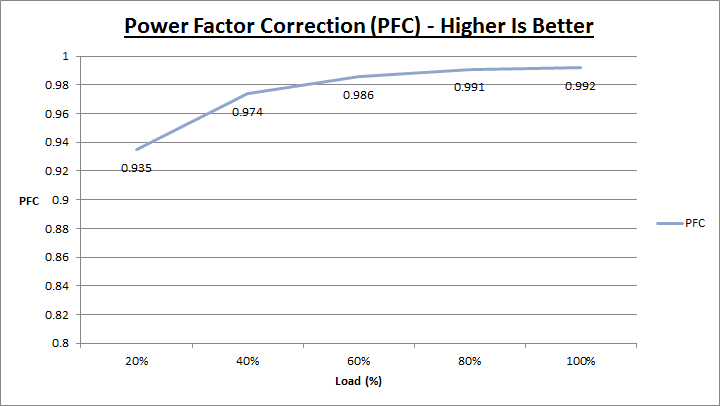be quiet! Straight Power 10 CM 800W Power Supply Review
Ryan Martin / 10 years ago
Efficiency, PFC and Voltage Regulation
Voltage Regulation
To test voltage regulation we load the power supply to five different load scenarios that give an equal spread of load across every single rail. So that means 20% on all rails, 40% on all rails and so on. We then calculate the average deviance of each rail from its expected voltage.

Voltage regulation shows the true capability of this FSP platform: incredible results! Less than 1.25% average deviance from perfect voltages is a brilliant performance.
Power Efficiency
Power efficiency is measured by calculating actual supplied wattage divided by the wattage drawn at the wall/plug, multiplied by 100 to give a percentage. We then compare that to the particular 80 Plus certification the company claims to see if it meets that. You can see the 80 Plus certifications below, we always test 230v power supplies.


In terms of efficiency the be quiet! Straight Power 10 CM 800W is about 1% higher than required at 20/100% loads for 80 Plus Gold Certification.
Power Factor Correction
Power Factor Correction is the ratio of the real power flowing to the load, to the apparent power in the circuit. The aim of PFC is to make the load circuitry that is power factor corrected appear purely resistive (apparent power equal to real power). In this case, the voltage and current are in phase and the reactive power consumption is zero. The closer the number to one the better as this allows the most efficient delivery of electrical power (Source – Wikipedia).

Strong PFC is essential to keeping power bills down as much as efficiency; be quiet!’s PSU demonstrates exceptional PFC performance.



















